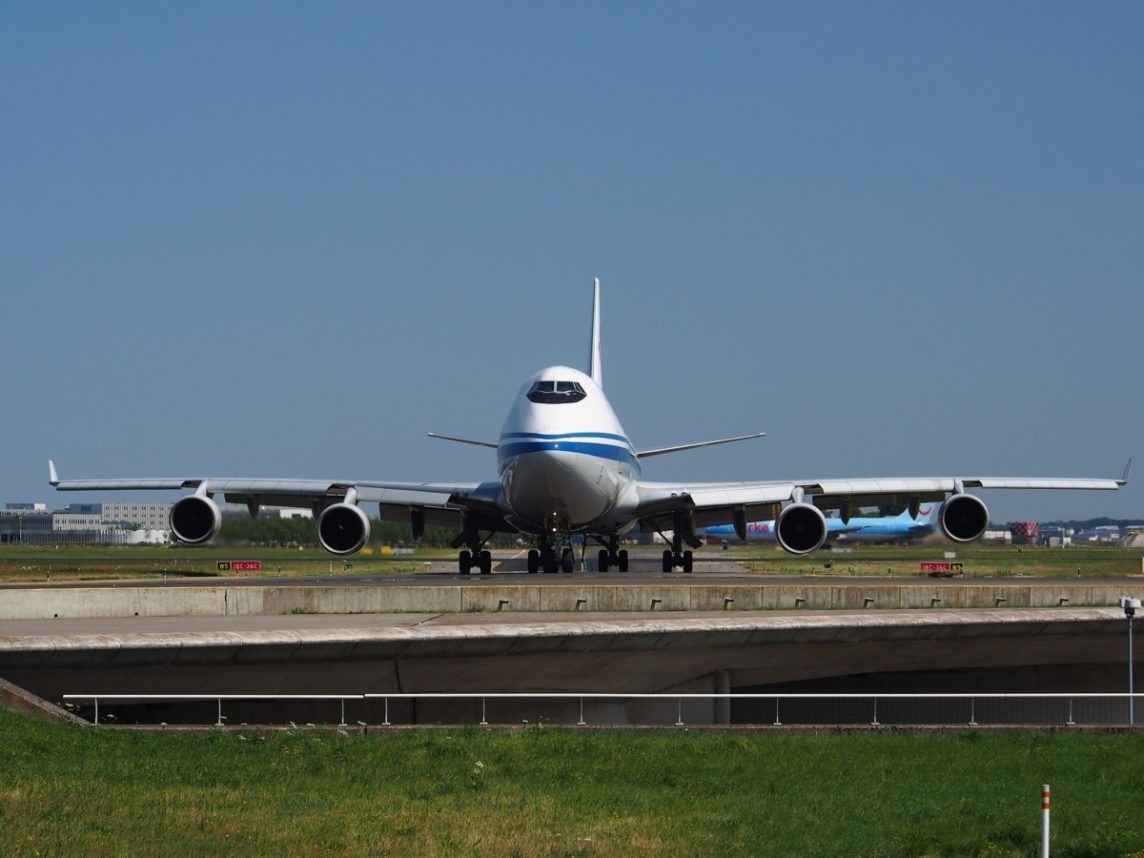Last year saw an extraordinary rate of growth for air cargo. No one expected 2019 to replicate that level of demand. Still, even with mild expectations, the global air freight market has been strikingly weak in the first half of 2019.
The International Air Transport Association (IATA) previously forecast an average annual growth rate of zero in 2019. Now, the group says that even that “looks optimistic.” In the first six months of 2019, air cargo tonnage fell by 5.7% in the face of a 0.1% increase in capacity. June saw a 9% decrease in volume transported worldwide in the air cargo industry. Asian airlines have been hit particularly hard. The region’s airlines recorded a 7.2% year-over-year fall in air cargo demand this June, which marks the 8th straight month of declining volume.
Last year saw an extraordinary rate of growth for air cargo. No one expected 2019 to replicate that level of demand. Still, even with mild expectations, the global air freight market has been strikingly weak in the first half of 2019.
The International Air Transport Association (IATA) previously forecast an average annual growth rate of zero in 2019. Now, the group says that even that “looks optimistic.” In the first six months of 2019, air cargo tonnage fell by 5.7% in the face of a 0.1% increase in capacity. June saw a 9% decrease in volume transported worldwide in the air cargo industry. Asian airlines have been hit particularly hard. The region’s airlines recorded a 7.2% year-over-year fall in air cargo demand this June, which marks the 8th straight month of declining volume.
There are a few factors at play here. International trade flow has been relatively weak overall. But as we head towards October’s usual peak season pick-up, it’s worth looking at a couple of specific factors that seem to be disrupting global supply chains.
Trade Wars and Tariffs
Unsurprisingly, the US-China trade war has begun to impact trans-Pacific air cargo business. On top of that, the effect is compounded by the changing shape of these tariffs.
Early tariffs were on products like steel and aluminum, which typically don’t ship via air cargo. Now, however, the trade war is starting to affect goods like medicine, electronics, and auto parts, which do rely more often on air cargo.
That is part of why the summer saw an even weaker market than cautious analysts predicted. There was an 11.5% drop in spot market freight rates from China/Hong Kong to the US through June and July. In July, shares of Atlas Air Worldwide Holdings, which fly for DHL and Amazon, fell nearly 25% in a single day to reach a three-year low. This was their steepest one-day percentage drop since 2008.
Manufacturers and shippers, meanwhile, tend to take a wait-and-see approach regarding tariffs and trade issues. And the trade war shows no signs of slowing: on August 1, Trump announced a new 10% tariff on another $300 billion of Chinese goods. Some items will be effected by the tariff on 1 September, others– including mobile phones, laptops, and computer monitors– not until December 15.
As the market responds, there may be increased volatility in the short-term. “Every time there is talk of more tariffs, goods get rerouted and sped up to avoid the latest group of tariffs,” according to analyst Helane Becker of Cowen Equity Research.
Brexit uncertainty, meanwhile, has not had the same disruptive effect on global air freight.
Automobile Sector Sees a Downturn
Another major factor in declining air cargo expectations is the weak automotive volume, which has had a brutal effect on trans-Atlantic air freight.
In the face of contracting markets, sales of passenger vehicles to car dealers fell 31% in July 2019 over July 2018. In May, BMW reported its first loss in a decade. And German carmaker Daimler recently issued its fourth profit warning of the year.
This decline has its own complex web of causes, but trade tensions between Washington and Beijing are again at play, as we witness a slump in demand in China, the world’s biggest market. Ford pulled plans to sell a Chinese-made Ford Focus in the US due to the impact of trade tariffs.
Air Cargo Will Be Safe in the End
Still, we expected a low of some kind, even if analysts didn’t expect these depths. And while the automobile sector is seeing a downturn, there is an interesting and growing demand for another product: fresh produce. In fact, the demand for fresh produce is growing so quickly that it has completely made up for a decreased demand in electronics.
The growing Chinese middle class is part of this increased demand for year-round produce availability. For example, red cherries are popular for the Chinese New Year in January and February, but they’re out of season then. Only air cargo can ship them in from Chile within two days of being harvested.
This also leads to an increase in demand for temp-controlled containers, and a greater focus on maintaining the cold chain.
Meanwhile, Atlas Air, despite blows, hasn’t had to discount new orders– even temporarily– as the market is nowhere near as severe in 2008 and 2009.
Overall, despite volatility in the short-term, I am optimistic about long-term demand for air freight.
. Asian airlines have been hit particularly hard. The region’s airlines recorded a 7.2% year-over-year fall in air cargo demand this June, which marks the 8th straight month of declining volume.
There are a few factors at play here. International trade flow has been relatively weak overall. But as we head towards October’s usual peak season pick-up, it’s worth looking at a couple of specific factors that seem to be disrupting global supply chains.
Trade Wars and Tariffs
Unsurprisingly, the US-China trade war has begun to impact trans-Pacific air cargo business. On top of that, the effect is compounded by the changing shape of these tariffs.
Early tariffs were on products like steel and aluminum, which typically don’t ship via air cargo. Now, however, the trade war is starting to affect goods like medicine, electronics, and auto parts, which do rely more often on air cargo.
That is part of why the summer saw an even weaker market than cautious analysts predicted. There was an 11.5% drop in spot market freight rates from China/Hong Kong to the US through June and July. In July, shares of Atlas Air Worldwide Holdings, which fly for DHL and Amazon, fell nearly 25% in a single day to reach a three-year low. This was their steepest one-day percentage drop since 2008.
Manufacturers and shippers, meanwhile, tend to take a wait-and-see approach regarding tariffs and trade issues. And the trade war shows no signs of slowing: on August 1, Trump announced a new 10% tariff on another $300 billion of Chinese goods. Some items will be effected by the tariff on 1 September, others– including mobile phones, laptops, and computer monitors– not until December 15.
As the market responds, there may be increased volatility in the short-term. “Every time there is talk of more tariffs, goods get rerouted and sped up to avoid the latest group of tariffs,” according to analyst Helane Becker of Cowen Equity Research.
Brexit uncertainty, meanwhile, has not had the same disruptive effect on global air freight.
Automobile Sector Sees a Downturn
Another major factor in declining air cargo expectations is the weak automotive volume, which has had a brutal effect on trans-Atlantic air freight.
In the face of contracting markets, sales of passenger vehicles to car dealers fell 31% in July 2019 over July 2018. In May, BMW reported its first loss in a decade. And German carmaker Daimler recently issued its fourth profit warning of the year.
This decline has its own complex web of causes, but trade tensions between Washington and Beijing are again at play, as we witness a slump in demand in China, the world’s biggest market. Ford pulled plans to sell a Chinese-made Ford Focus in the US due to the impact of trade tariffs.
Air Cargo Will Be Safe in the End
Still, we expected a low of some kind, even if analysts didn’t expect these depths. And while the automobile sector is seeing a downturn, there is an interesting and growing demand for another product: fresh produce. In fact, the demand for fresh produce is growing so quickly that it has completely made up for a decreased demand in electronics.
The growing Chinese middle class is part of this increased demand for year-round produce availability. For example, red cherries are popular for the Chinese New Year in January and February, but they’re out of season then. Only air cargo can ship them in from Chile within two days of being harvested.
This also leads to an increase in demand for temp-controlled containers, and a greater focus on maintaining the cold chain.
Meanwhile, Atlas Air, despite blows, hasn’t had to discount new orders– even temporarily– as the market is nowhere near as severe in 2008 and 2009.
Overall, despite volatility in the short-term, I am optimistic about long-term demand for air freight.
Red Arrow Logistics has the scale and scope to meet the budget and schedule requirements of the largest and smallest companies alike. If we can be of assistance, please email me at liz.lasater@redarrowlogistics.com or give us a call 425-747-7914



